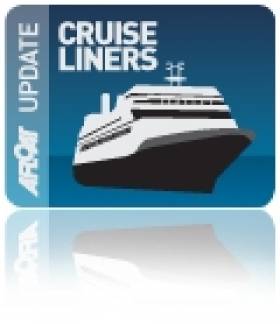Displaying items by tag: Cruiseships
Dun Laoghaire ‘Cruise’ Harbour Project Out To Tender
-Dun Laoghaire Rathdown County Council
-Dun Laoghaire Harbour Company
-Dun Laoghaire Chamber of Commerce
-Dun Laoghaire Business Association
and Dun Laoghaire Tourism interests.
Frostbite 'Cruising'
This morning the 28,388 gross tonnes cruises-ship Boudicca is due to arrive into Dublin Port, writes Jehan Ashmore. The visit of the 1973-built vessel will represent the second last cruise-call of this year's cruise-season. The 900-passenger capacity Boudicca will depart later today on a 10-day cruise to include calling to Cork.
The final cruise-call scheduled for Dublin Port will once again by made by Boudicca on 20 November. On that cruise the Fred. Olsen Cruise Lines ship will be returning from Cork after an overnight passage.
Next year Dublin is to welcome 86 cruise-ships, where the largest of these vessels will berth in Alexandra Quay, located 2 kms from the city centre. Smaller vessels can dock closer to the city-centre but they have to transit the East-Link toll-road lift bridge. In addition the depth of water on the River Liffey also restricts the size of cruise-ship.
Incidentally the Boudicca will be the first caller to Dublin in 2011, with a morning arrival due on 9 April. For further information on next year's cruise-call season, a list is available online at www.dublinport.ie/not-in-menu/cruise-ship-scheduled/
























































